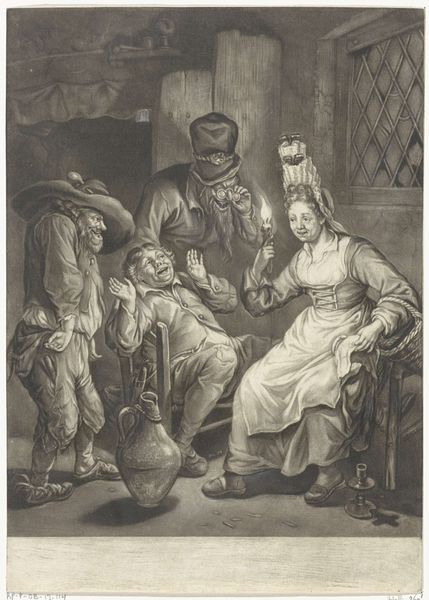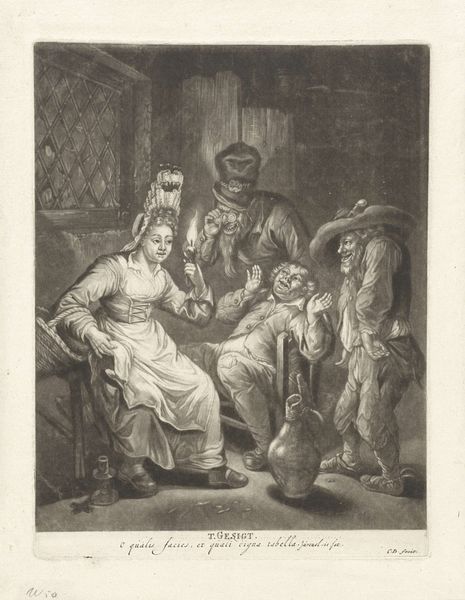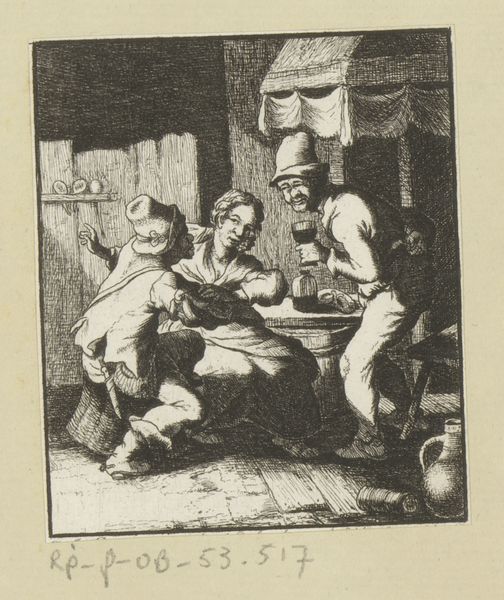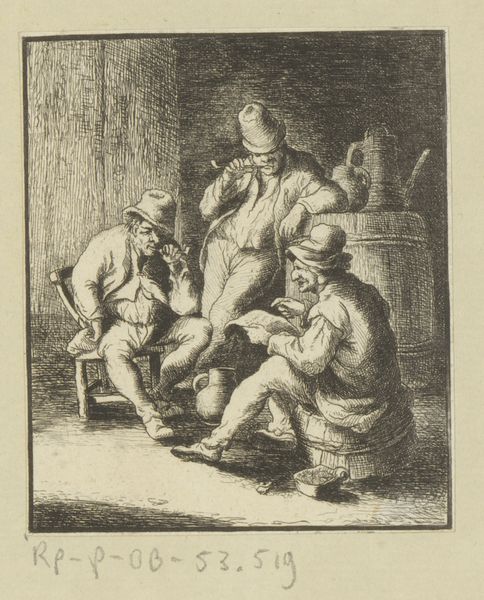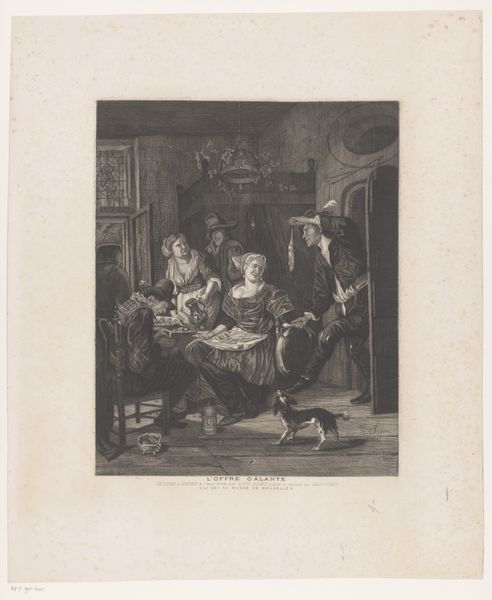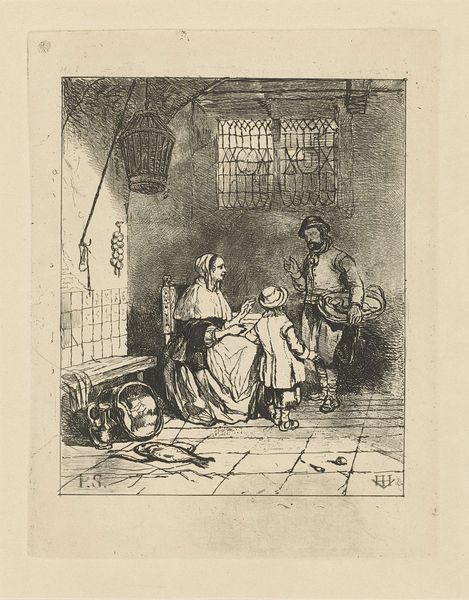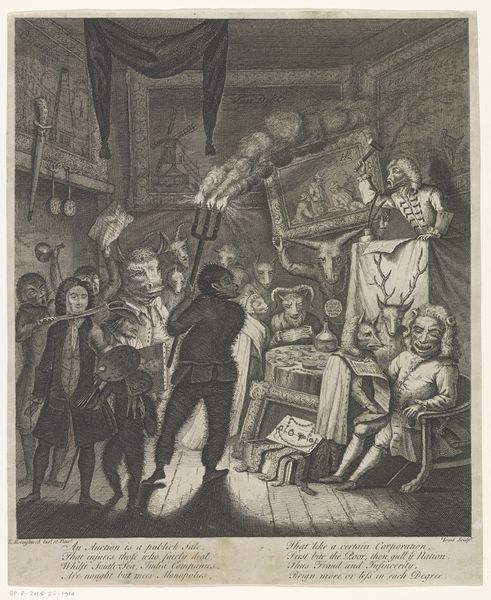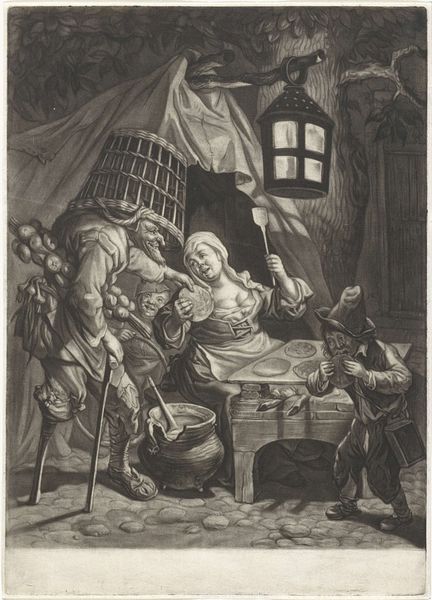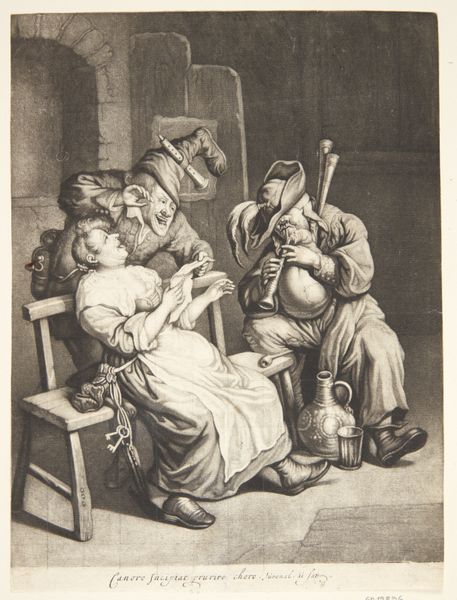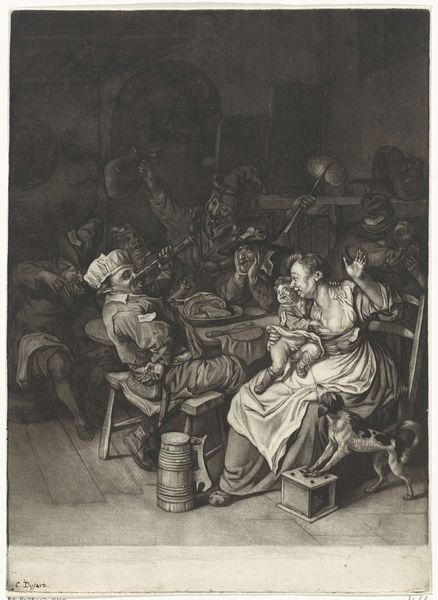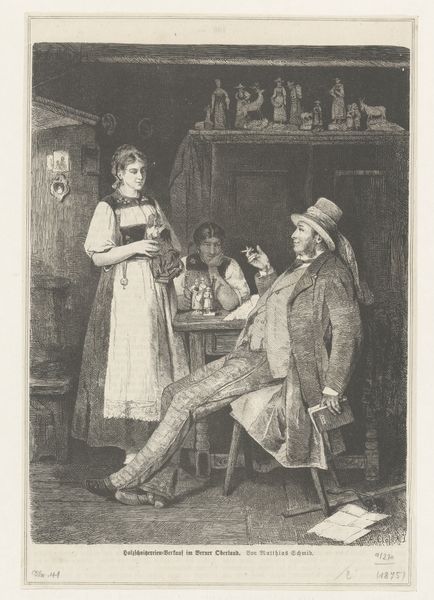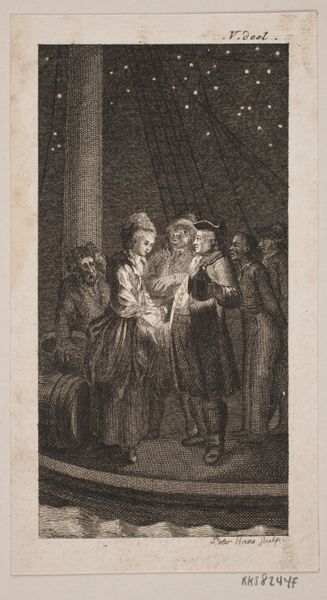
print, mezzotint
#
narrative-art
#
baroque
#
dutch-golden-age
# print
#
figuration
#
group-portraits
#
mezzotint
#
genre-painting
Dimensions: 244 mm (height) x 187 mm (width) (bladmaal)
Curator: Right, let's dive into this Dutch Golden Age print, currently residing at the Statens Museum for Kunst. This mezzotint by Cornelis Dusart, likely created sometime between 1660 and 1704, is titled "Synssansen," or "The Sense of Sight." It clearly depicts a scene of people engaging with, well, seeing! What springs to mind for you on first viewing? Editor: Oh, it's a little chaotic, isn't it? My initial reaction is a giggle! There’s such exaggerated glee plastered on their faces. It feels like stepping into a rowdy tavern, faces lit by candlelight, practically vibrating with unfiltered…sight, I suppose! Curator: Precisely! Consider the medium: mezzotint allowed for rich tonal variations. The material application creates those dramatic contrasts of light and shadow. These prints, accessible commodities at the time, brought such genre scenes into wider circulation, influencing perceptions and even moral attitudes concerning sight and visuality. Notice the expressions; they border on caricature. Editor: Absolutely, that’s what grabbed me! The faces! Is that a surgeon with a grotesque mask trying to…I don’t know…correct someone’s vision? The poor bloke in the chair seems none too pleased by whatever is waved in front of his nose! The torchbearer is smirking! There is almost a cruelty lurking behind it. I wonder who it might be intended for—are we meant to find some humour in a visual disability or something? Curator: Perhaps! There were often broad satirical commentaries embedded within genre scenes. In Dutch Golden Age art, we see a rise in paintings, and particularly prints such as this, aimed at a rising merchant class. Consumption became the defining characteristic of the nation’s prosperity. Dusart is pointing his viewers, primarily from the upper middles classes, to the dangers that unfettered senses may bring and to what they could potentially sink. It really is a meditation on vision as a privilege. Editor: Ah, I get that! There's something disquieting in that forced humour now. Suddenly that slightly-too-gleeful look is tinged with judgement. Curator: Exactly, it adds layers of meaning. Even the candle seems strategically placed; an object meant to enlighten but is here, perhaps, misguiding. It speaks volumes about visual culture and who controlled it back then. Editor: I see it completely differently now, and the initial humor's kind of evaporated. Dusart makes us really confront how class might influence one’s ability to experience something seemingly simple – like seeing. Thanks, I feel properly unsettled, in a good way. Curator: Then we have succeeded! The materiality meets the metaphorical and suddenly the sense of sight is weighted with so much cultural baggage!
Comments
No comments
Be the first to comment and join the conversation on the ultimate creative platform.
